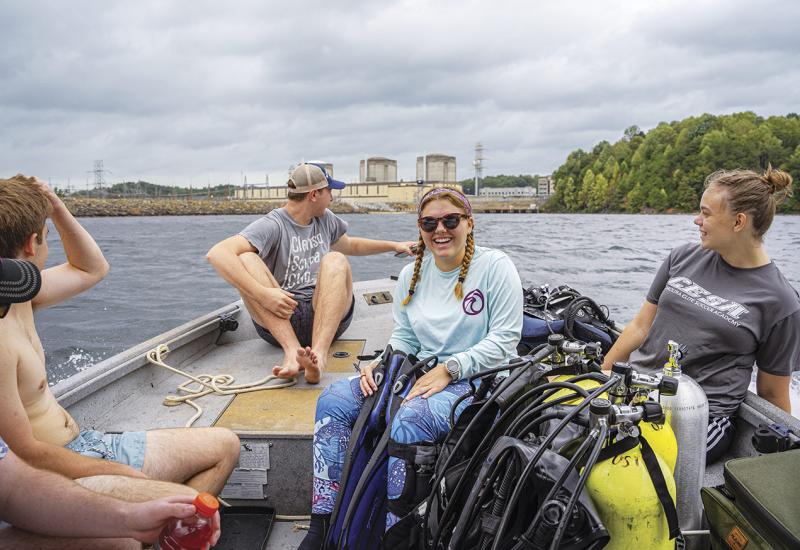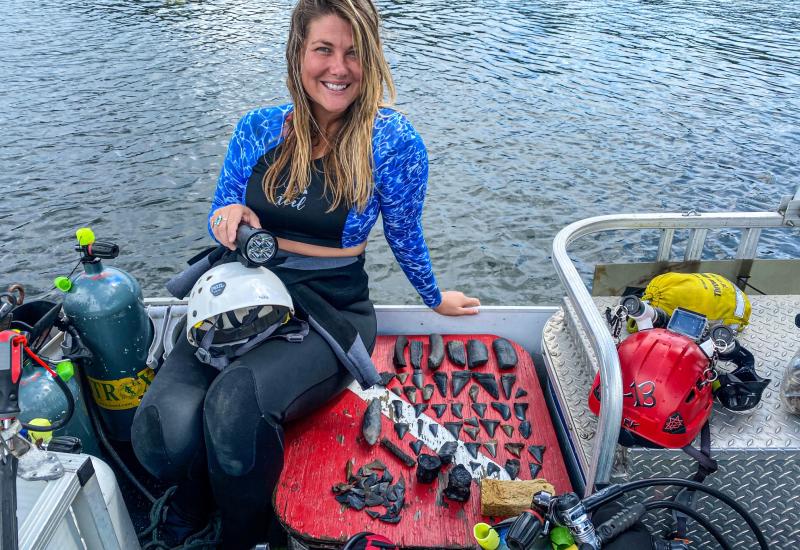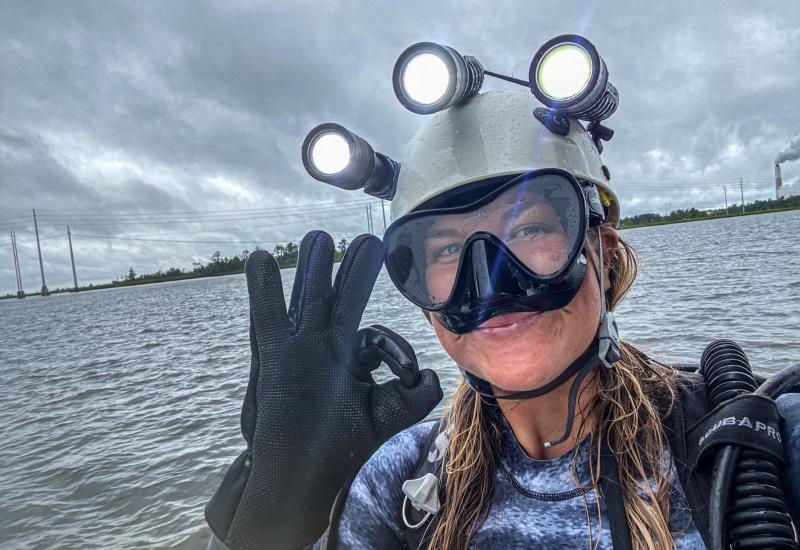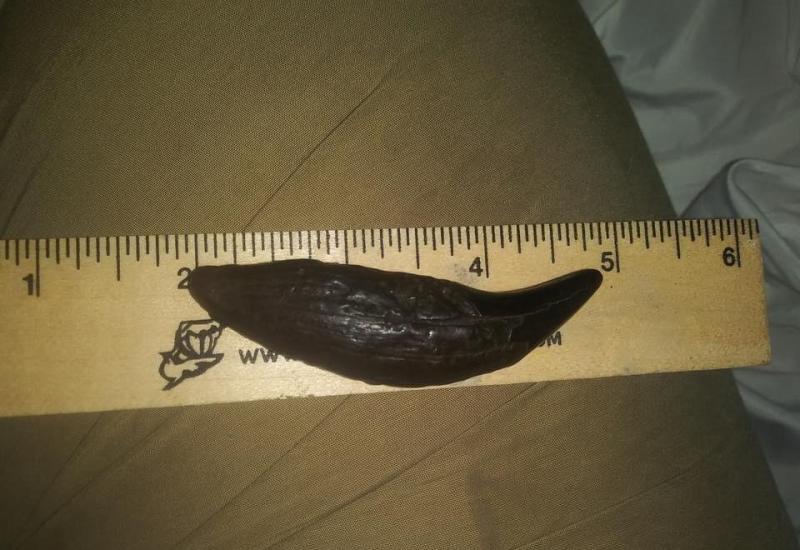Gray's Reef National Marine Sanctuary
 |
| Reef spider: The yellow line arrow crab. |
April 2003
By J.C. Gamble
Photos courtesy of National Oceanic and Atmospheric Administration /Dept of Commerce
 |
| Goddess of the Deep: A Florida regal sea goddess feeds on a sponge. |
After two stormy October days, the Atlantic Ocean off coastal Georgia had returned to normal and both men and dolphins were making up for lost time.
As our dive boat raced toward Gray's Reef National Marine Sanctuary, we passed trolling shrimp boats being chased by bottlenose dolphins. The dolphins were taking turns surfing the wake of the nets and gorging themselves on the doomed crustaceans. It was an auspicious sign after days of roiling seas that had calmed down only overnight.
Soon we were 19 miles offshore, within sight of the bobbing yellow buoy that marks the center of the sanctuary. Under the console's canopy, all eyes turned to the depth finder to watch the flat, featureless bottom contour suddenly spike upward as the display began sketching the outline of the rock outcroppings below. Capt. Bob Bunkley deployed a marker buoy and gave the order to suit up.
As we dropped into wine-bottle-green waters, the rock clusters--each four to eight feet high and hemmed by a curtain of sardines--came into view. Spanish mackerel in schools of a few dozen worked the perimeter, cruising with deliberate calculation, the blue-green shimmer of their underbellies like vapor trailing a jet plane as they passed.
The visibility was a good 15 feet and the water alive with daily activity: a trio of massive blue angelfish, a pair of gray triggerfish, amberjacks interweaving among the mackerels and a pair of oyster toadfish snoozing alongside a scorpionfish. Several foot-long gag groupers and scamp groupers eyed us with caution.
Gray's Reef is one of the largest nearshore live-bottom reefs in the country and a prime example of the encrusted limestone ledges found off the southeastern United States. Formed by sedimentation during the last ice age, the sandstone and limestone ledges rise as high as eight feet off the ocean floor and are riddled with caves, burrows and overhangs.
 |
| Lazy Eye: Dusky flounders are common burrowers in the sand flats neighboring the reef. |
The term live bottom comes from the living layer of sessile invertebrates that blanket the ledges, their tiny movements sometimes noticeable to divers.
"These organisms are tunicates, sponges, soft and hard corals, algae and bryozoans," says Greg McFall, NOAA's research coordinator for Gray's Reef. "When you look at these rocky outcrops you see a 'living' bottom."
Live bottom isn't exactly your typical coral reef, but like a coral structure it provides shelter for a variety of marine life, including more than 100 species of fish from tomtates and black sea bass to pelagics like barracuda and mackerels. Just last August, a survey team from the Reef Environmental Education Foundation (REEF) identified 82 species of fish in four days of diving, a quick sample that included a number of the wayward tropical fish that find their way to Gray's Reef.
"The most peculiar species that we see arrive in the spring or summertime while they ride the Gulf Stream north from either Florida or the Caribbean," says McFall. "Most of the tropical species do not survive the winter temperatures, so it's really a one-way trip for the majority of them."
Gray's Reef, a National Marine Sanctuary since 1981 and UNESCO biosphere reserve since 1986, is on the southern end of another migratory route: that of the northern right whale. Considered the most endangered large whale in the world, the right whales are monitored closely with satellite tags as they come south to calve and nurse their young. Resident loggerhead sea turtles, also tracked with satellite tags, roam and forage within the sanctuary, moving inland between three and five times each summer to nest along coastal Georgia.
For divers in the Southeast, Gray's Reef is a well-kept secret, a place suited to advanced divers familiar with currents and unpredictable visibility. Whether the visibility is pea soup or a solid 65 feet, watching the dorsals of marauding dolphins breaking in the wake of shrimp boats alone makes it worth the trip.
 |
| Residents of Gray's Reef, belted sandfish often lurk inside barrel sponges. |
Dive In: Gray's Reef National Marine Sanctuary
||
|---|
|

|
LOCATION: Just 19 miles off the coast of Sapelo Island, Ga., Gray's Reef is a 17-square-nautical-mile national marine sanctuary. Diving at Gray's Reef, though more common from April to November, is conducted year-round as visibility peaks during the coldest months and in early summer.
WATER CONDITIONS: Temperatures rise to the mid-80Fs during summer and drop to the high 40Fs in winter. Depending on current, tides and wind, visibility ranges from two feet to 65 feet.
DIVE PROFILE: Two-tank drift dives close to the slack tide window are typical because of the strong offshore currents. Departures are timed with the tide and cycle for maximum vis and minimal current. Gray's Reef is a popular sportfishing and recreational diving spot, thanks to an abundance of game fish including snapper, grouper and amberjack. While line and spearfishing are allowed inside the sanctuary, commercial fishing and the use of powerheads are prohibited.
DIVE OPERATORS: Georgia Offshore, (912) 658-3884, www.georgiaoffshore.com; Island Dive Center, (800) 940-3483; www.islanddivecenter.com.
FOR MORE INFORMATION: Contact Gray's Reef National Marine Sanctuary at (912) 598-2345, e-mail: [email protected]; web: www.graysreef.nos.noaa.gov.
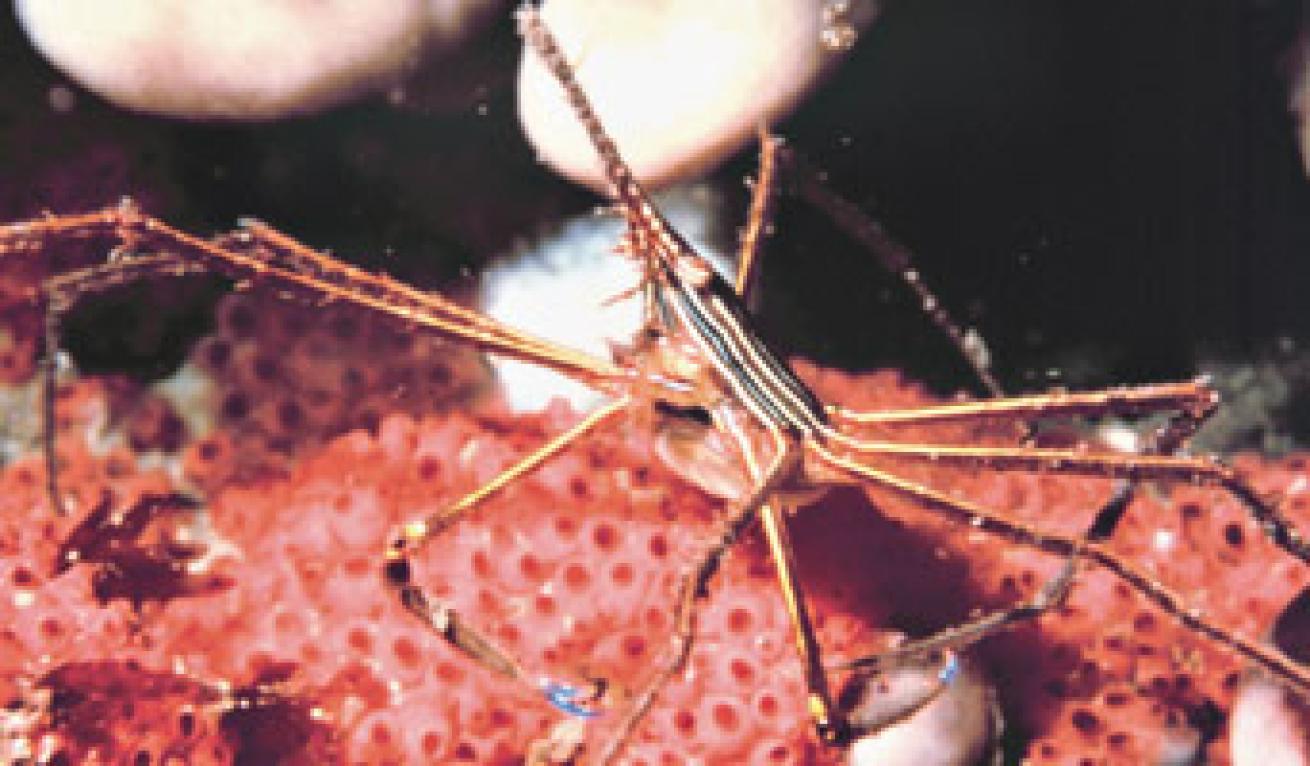
Reef spider: The yellow line arrow crab.
April 2003
By J.C. Gamble
Photos courtesy of National Oceanic and Atmospheric Administration /Dept of Commerce
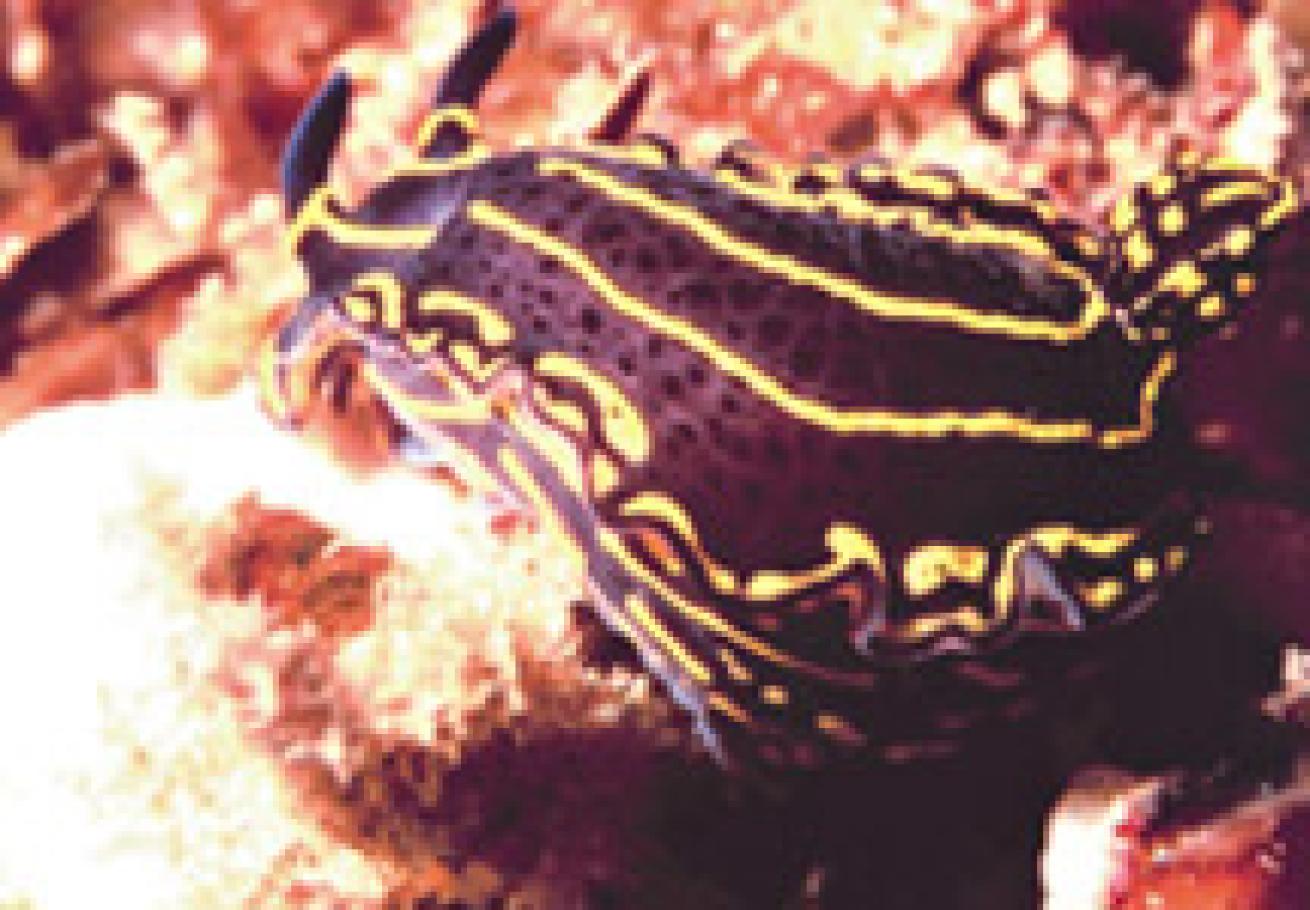
Goddess of the Deep: A Florida regal sea goddess feeds on a sponge.
After two stormy October days, the Atlantic Ocean off coastal Georgia had returned to normal and both men and dolphins were making up for lost time.
As our dive boat raced toward Gray's Reef National Marine Sanctuary, we passed trolling shrimp boats being chased by bottlenose dolphins. The dolphins were taking turns surfing the wake of the nets and gorging themselves on the doomed crustaceans. It was an auspicious sign after days of roiling seas that had calmed down only overnight.
Soon we were 19 miles offshore, within sight of the bobbing yellow buoy that marks the center of the sanctuary. Under the console's canopy, all eyes turned to the depth finder to watch the flat, featureless bottom contour suddenly spike upward as the display began sketching the outline of the rock outcroppings below. Capt. Bob Bunkley deployed a marker buoy and gave the order to suit up.
As we dropped into wine-bottle-green waters, the rock clusters--each four to eight feet high and hemmed by a curtain of sardines--came into view. Spanish mackerel in schools of a few dozen worked the perimeter, cruising with deliberate calculation, the blue-green shimmer of their underbellies like vapor trailing a jet plane as they passed.
The visibility was a good 15 feet and the water alive with daily activity: a trio of massive blue angelfish, a pair of gray triggerfish, amberjacks interweaving among the mackerels and a pair of oyster toadfish snoozing alongside a scorpionfish. Several foot-long gag groupers and scamp groupers eyed us with caution.
Gray's Reef is one of the largest nearshore live-bottom reefs in the country and a prime example of the encrusted limestone ledges found off the southeastern United States. Formed by sedimentation during the last ice age, the sandstone and limestone ledges rise as high as eight feet off the ocean floor and are riddled with caves, burrows and overhangs.
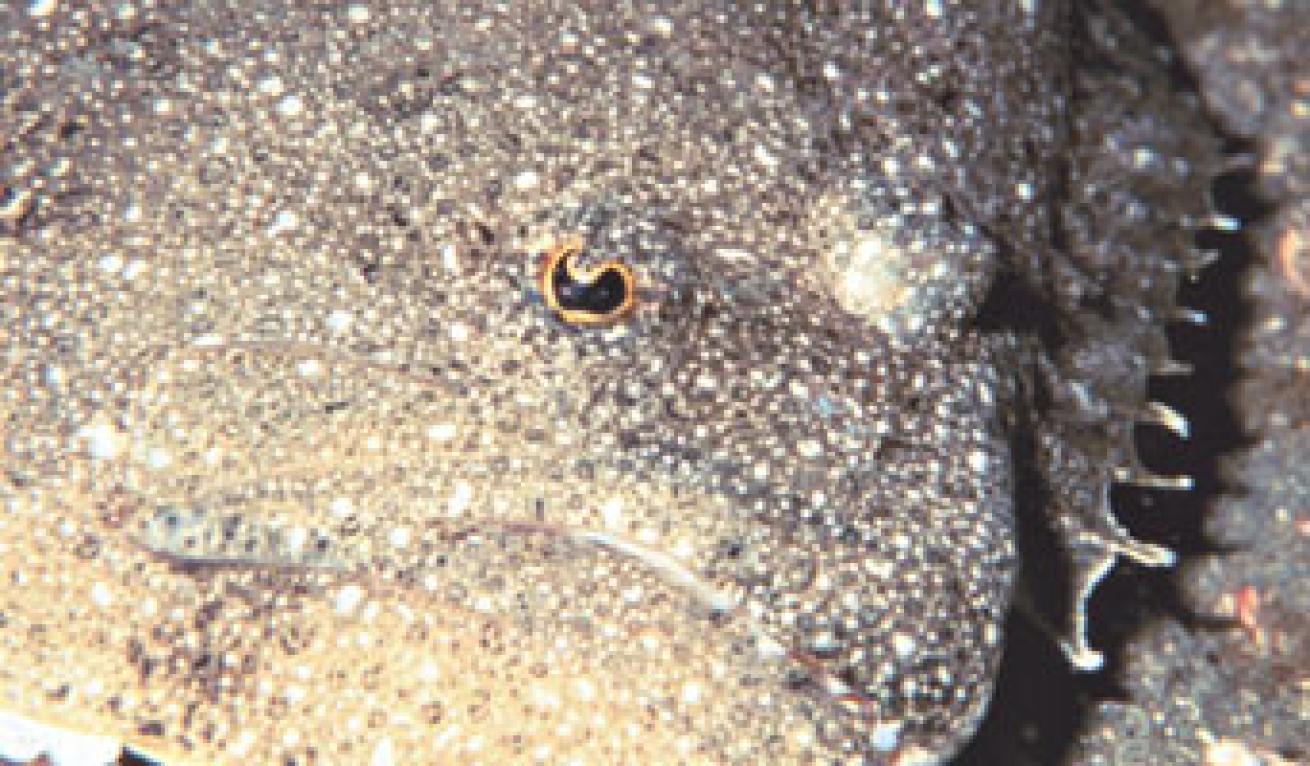
Lazy Eye: Dusky flounders are common burrowers in the sand flats neighboring the reef.
The term live bottom comes from the living layer of sessile invertebrates that blanket the ledges, their tiny movements sometimes noticeable to divers.
"These organisms are tunicates, sponges, soft and hard corals, algae and bryozoans," says Greg McFall, NOAA's research coordinator for Gray's Reef. "When you look at these rocky outcrops you see a 'living' bottom."
Live bottom isn't exactly your typical coral reef, but like a coral structure it provides shelter for a variety of marine life, including more than 100 species of fish from tomtates and black sea bass to pelagics like barracuda and mackerels. Just last August, a survey team from the Reef Environmental Education Foundation (REEF) identified 82 species of fish in four days of diving, a quick sample that included a number of the wayward tropical fish that find their way to Gray's Reef.
"The most peculiar species that we see arrive in the spring or summertime while they ride the Gulf Stream north from either Florida or the Caribbean," says McFall. "Most of the tropical species do not survive the winter temperatures, so it's really a one-way trip for the majority of them."
Gray's Reef, a National Marine Sanctuary since 1981 and UNESCO biosphere reserve since 1986, is on the southern end of another migratory route: that of the northern right whale. Considered the most endangered large whale in the world, the right whales are monitored closely with satellite tags as they come south to calve and nurse their young. Resident loggerhead sea turtles, also tracked with satellite tags, roam and forage within the sanctuary, moving inland between three and five times each summer to nest along coastal Georgia.
For divers in the Southeast, Gray's Reef is a well-kept secret, a place suited to advanced divers familiar with currents and unpredictable visibility. Whether the visibility is pea soup or a solid 65 feet, watching the dorsals of marauding dolphins breaking in the wake of shrimp boats alone makes it worth the trip.
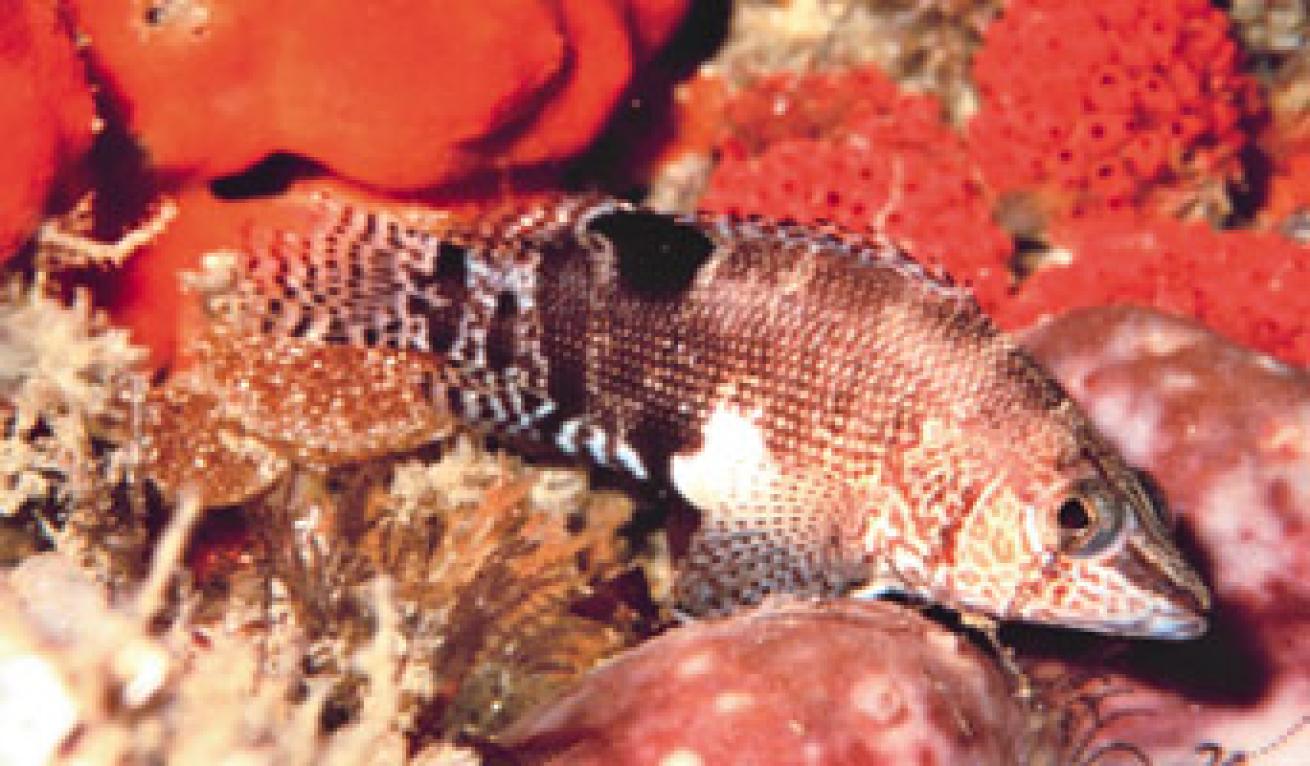
Residents of Gray's Reef, belted sandfish often lurk inside barrel sponges.
Dive In: Gray's Reef National Marine Sanctuary
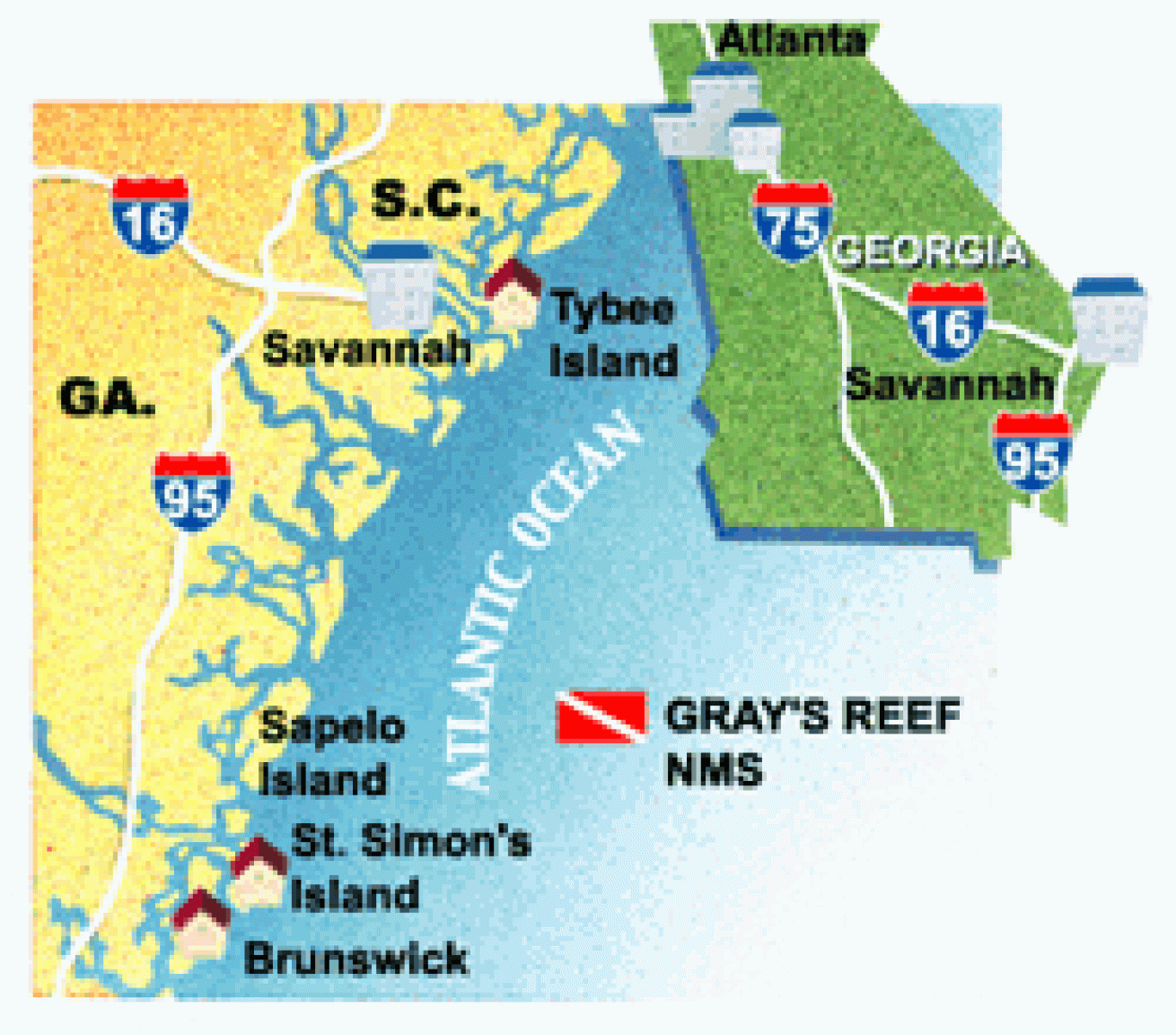
LOCATION: Just 19 miles off the coast of Sapelo Island, Ga., Gray's Reef is a 17-square-nautical-mile national marine sanctuary. Diving at Gray's Reef, though more common from April to November, is conducted year-round as visibility peaks during the coldest months and in early summer.
WATER CONDITIONS: Temperatures rise to the mid-80Fs during summer and drop to the high 40Fs in winter. Depending on current, tides and wind, visibility ranges from two feet to 65 feet.
DIVE PROFILE: Two-tank drift dives close to the slack tide window are typical because of the strong offshore currents. Departures are timed with the tide and cycle for maximum vis and minimal current. Gray's Reef is a popular sportfishing and recreational diving spot, thanks to an abundance of game fish including snapper, grouper and amberjack. While line and spearfishing are allowed inside the sanctuary, commercial fishing and the use of powerheads are prohibited.
DIVE OPERATORS: Georgia Offshore, (912) 658-3884, www.georgiaoffshore.com; Island Dive Center, (800) 940-3483; www.islanddivecenter.com.
FOR MORE INFORMATION: Contact Gray's Reef National Marine Sanctuary at (912) 598-2345, e-mail: [email protected]; web: www.graysreef.nos.noaa.gov.

